Thank you for visiting! By the way… any links on this page that lead to products on Amazon and other stores/partners are affiliate links Aquarium Store Depot earns a commission if you make a purchase.
In this blog post, you’ll learn all about the process of fishless cycling. What is it? How does it work? Why would you do it? Don’t worry! It’s not as complicated as it sounds!
Let me help to guide you through the process and answer any questions that come up along the way. I’ll share some tips for success with each step so your tank will be clean, healthy, and ready for fish in no time!
So what are you waiting for? Let’s get started!
Why Do We Cycle?
The first question we should start with is why do we do a cycle anyway? And, what exactly is a cycle? Many newcomers may think you can just put a fish in a tank on day one and everything should work out well. Unfortunately, this can lead to some pretty sad results.
Biology is the major reason why we need to cycle. It all starts with the nitrogen cycle. Until you have a complete cycle, your aquarium is prone to building up toxic levels of nutrients that can harm, stress, and even kill your fish!
You want the best for your prized pets, so knowing how the nitrogen cycle works should be the first point of reference we need to understand.
The Nitrogen Cycle
There is a great video that really explains the nitrogen cycle in a fun and entertaining way by Girl Talks Fish below that I’ll embed for you. I’ll go more into my boring details below:
There are 4 stages to the nitrogen cycle that occurs in our aquariums. They are:
- Stage 1 – Ammonia is excreted as a fish waste product or from decaying matter
- Stage 2 – Nitrosomonas bacteria convert ammonia to nitrite
- Stage 3 – Nitrobacter bacteria convert nitrite to nitrate
- Stage 4 – Plants use nitrates as fertilizer
I’ll go into further details in a future article. The main thing to take away is if your ecosystem cannot get to at least stage 3 with stability, you will have major uses with fish and invert health in your aquarium. We cycle our aquariums in order to build a balanced ecosystem, one that is suitable for our fish to live in.
How Does A Fishless Cycle Work?
Fishless cycling works by using an ammonia source with a combination of beneficial bacteria. As the ammonia is added, the bacteria will consume the ammonia and convert it down to nitrate. Eventually, we get to the point where the aquarium has enough bacteria to handle livestock additions.
In the old days of aquariums (like when I started 😅), it was an acceptable practice to use hardy fish to cycle an aquarium. Oftentimes, these poor sacrificial fish would either not make it, or they would be eaten by the larger display fish the aquarium owner really wanted to keep.
In saltwater aquariums, the fish people would use for cycles would be damselfish. The hardy little fish would usually survive a cycle but would turn into terrors in a community tank since they are very territorial and are best added last. Check out our video from our YouTube channel for an overview. We go into more detail in our blog post further down. Subscribe if you like our content!
To avoid fish mortality and unwanted aggression to future tank mates, hobbyists worked to develop more humane and effective techniques to cycle a fish tank. Not only were these new methods humane, but they also were a lot faster than the old methods. It’s all based on the use of nitrifying bacteria.
What is Nitrifying Bacteria?
As mentioned in the nitrogen cycle stages, Nitrosomonas and Nitrospira bacteria are the workhorses for turning ammonia into nitrate. These two types of bacteria make all life possible in your aquarium. Without them, the fish tank would get overwhelmed with toxic chemical levels and nothing could live in it.
Nitrifying bacteria can come from many sources these days. Here are a few common ways of introducing them.
- Bacteria in a bottle products
- Introducing any livestock to the tank
- Live Rock and Live Sand (for saltwater tanks)
- Live plants (for planted tanks)
I will go through each way in this article. There are pros and cons to each one and you should choose the one that works best for your situation. As for me, I like bacteria in a bottle. There are many good products these days like Fritz Turbo Start for freshwater tanks and BioSpira for saltwater tanks.
Fritz Turbo Start is known in the industry as the fastest acting nitrifying bacteria you can purchase. This 700 version is specialized for freshwater tank and has my highest recommendation
Necessary Equipment
You actually do not need much to perform a fishless cycle. Depending on what method you use you will need the following:
- A fish tank
- An aquarium filter
- A heater (for tropical tanks)
- Liquid ammonia OR some other sort of ammonia source
- Bacteria in a bottle or seeded filtration media (depending on what method you choose)
Before we talk about methods, let’s discuss the advantages of a fishless cycle vs. a traditional cycle.
Fishless Cycle vs. Traditional cycle
Fishless cycling has several advantages over a traditional cycle. Here is a quick list:
- Fishless cycling is more humane and reduces/eliminates livestock fatalities
- Cycling with ammonia and bacteria in a bottle is disease-free
- Fishless cycling is more aggressive and as a result cycles faster than a traditional cycle
- You will not have any undesirable fish left over after the cycle
Traditional cycling seems simple at first, but it can actually lead to a number of problems. You will have fish that are stressed and they could get sick as a result, leading to further complications. It’s better to be in control of the entire cycle by fishless cycling in order to start out your fish tank cycled and disease-free.
Traditional cycling also takes far longer. A typical traditional cycle can take 30 – 45 days, while a fishless cycle can be completed in as little as 7 days and sometimes even quicker! There are way more advantages than disadvantages to using a fishless cycling method over a traditional one, so it’s no wonder nearly everyone these days starts with them.
Now that we know why fishless cycling is best for us, let’s figure out what cycling method we will use.
How to fishless cycle
There are actually several methods you can use when it comes to performing a fishless cycle. Each one has its pros and cons. These methods are:
- Cycling with ammonia
- Cycling with fish food
- The shrimp method
- Cycling with live plants
- Cycling with live rock & live sand
- Cycling by seeding your tank with bacteria
Each one of these methods will work to cycle your tank, oftentimes much faster than the traditional method. Many of these methods are “sterile” meaning they will not introduce diseases to your aquarium. Let’s dive into each method to learn more!
1. Using Ammonia
Cycling with pure ammonia is one of the most popular ways of cycling a new tank without fish. Not just any household ammonia will do though, because these often contain other ingredients that could do a lot of harm.
Ammonia into a tank?!? Sounds crazy doesn't it. It's what all the cool kids use to cycle their tanks these days.
For this cycling process, we want to use ammonium chloride. My go-to product for this method is Dr. Tim’s Ammonium Chloride. To use the ammonia method you would need to perform the following steps:
- Step 1 – Add bacteria in a bottle
- Step 2 – Add ammonium chloride until you read 2PPM
- Step 3 – Wait 24 hours
- Step 4 – Test ammonia and nitrite levels
- Step 5 – If you are at 0 ammonia and 0 nitrites, add ammonia until you are at 2PPM again
- Step 6 – Wait 24 hours
- Step 7 – Test ammonia and nitrite, add ammonia until you are at 2PPM again
- Step 8 – Wait 24 hours
- Step 9 – If no ammonia and nitrites, test for nitrates, if high, do a water change to lower levels
- Step 10 – Time to add fish
For ammonia and nitrite level testing, a simple API test kit should work and will help you get the job done
Pros of the Ammonia Approach
- Easy to do and proven products available
- Easy to test
- Completely “sterile” – a great way to start off your tank disease-free
- No mess method
Cons of the Ammonia Approach
- Expensive to do (especially for larger tanks and saltwater)
- It may take longer than other methods
2. Using Fish Food To Cycle The Aquarium
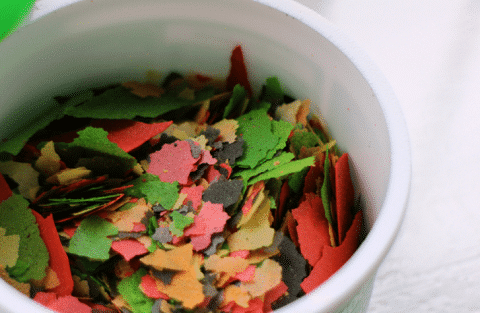
Using fish food as a cycling method is also a popular alternative in a new tank. This can be done with a combination of flake or pellet food and bacteria in a bottle. All you do is feed the aquarium every day with food and monitor your ammonia levels.
It’s less of an exact science than the ammonia chloride method, but you can use the fish food you were planning to use from the start. Depending on your budget, you’ll find this a very affordable alternative for individuals who are looking to save a few dollars.
Pros of Fish Food Approach
- Cheap
- You will need the fish food for when you get fish
- It will get you used to feeding your fish
Cons of Fish Food Approach
- Messy
- Not an exact science
- It may take some trial and error to get right
3. The Dead Shrimp Method
The shrimp method cycling process was originally popularized by Melev’s reef as a safe way of cycling a tank. It involves purchasing a jumbo shrimp at your local supermarket and putting it inside your tank for several days in order to create an ammonia spike.
Because the shrimp decays in your tank, it creates the opportunity for beneficial bacteria to populate. Due to the total organic chemistry, the dead shrimp method produces more ammonia than the fish feed procedure.
This method does not require bacteria in a bottle but can be sped up with it. You should leave the shrimp in your tank for at least 2-3 days.
For a nice video overview, check out this video by Blue Damsel as she explains how she cycled her tank with a shrimp.
Pros of Shrimp Method
- Doesn’t require bacteria in a bottle
- Cheap
- Only requires one introduction of ammonia
Cons of Shrimp Method
- Smelly
- Can take longer than other methods
4. Cycling With Live Plants

This is an aquascaper’s favorite here for the freshwater aquarium. Cycling with live plants is natural, effective, and kills two birds with one stone. You cycle your new tank, build a great setup, and your tank is ready for lots of fish when the cycle is done.
There are two ways to do this cycling, you can perform a dry start or you can do a flood/underwater start. Depending on the plants you are planning, a dry start can be the best way to get this done.
I recommend you start by using an active soil. This soil will introduce the necessary ammonia, which your plants and bacteria will consume.
Let’s talk about steps:
- Step 1 – Use an active substrate like Tropical Aquasoil
- Step 2 – Plant your aquarium plants
- Step 3 – Fill tank or grow dry if using the dry start method
- Step 4 – Add bacteria in a bottle to accelerate the cycle process
- Step 5 – Test every 24 hours to monitor ammonia and nitrite levels
- Step 6 – Do not add any fish until you read 0 ammonia and nitrite levels for two straight tests
- Step 7 – Add fish, starting with algae eaters first, then other fish 2-3 weeks later
By using bacteria in a bottle, you can usually get to Step 7 in about a week sometimes longer.
Pros of Live Plants Method
- Works best for aquascapes and planted tanks
- A healthy way to build a natural tank
- Fast
Cons of Live Plants Method
- Expensive
- Not ideal for certain fish setups
- Algae blooms
5. Cycling With Live Rock & Live Sand (Saltwater Aquariums Only)
One of the best ways of cycling a marine or reef tank is to use live rock and sand. Of course, ‘live’ rock and sand are not really alive, but rather home to all sorts of bacteria and organisms that have colonized it in nature, or after being seeded in an established aquarium.
Live rock usually has a very rough and intricate texture, with loads of holes and crevices for life forms to attach themselves. Healthy live rock or sand that has been handled correctly will introduce the beneficial nitrifying bacteria to your tank that maintain your water quality. The other organisms that live in the live rock and substrate will also produce some ammonia which helps in maintaining the cycle.
An old school solution. Once cured, Dinos tend not to be an issue because of the great biodiversity contained in this rock.
Let’s talk about the steps:
- Step 1 – Set up your aquarium, complete with filter, heater, thermometer, and all other necessary hardware. Add water of the correct salinity
- Step 2 – Let your filter and heater run for a day or so and the water warm up to the right temperature
- Step 3 – Get your live rock and sand. Use cured live rock that has been kept wet
- Step 4 – Inspect the live rock or substrate for any unwanted organisms and remove them, but do not sterilize the seeding materials
- Step 4 – Sprinkle live sand into the floor of the tank and add your live rock
- Step 5 – Provide an ammonia source like some fish food to help sustain the nitrifying bacteria
- Step 6 – After a few days, test the water, if you read 0 parts nitrite and ammonia, and some nitrates, your tank is cycled
- Step 7 – Add fish
If Ammonia and nitrite are present, your tank is still cycling. This often happens as a result of some of the organisms and bacteria dying off after being move to a new environment. Do a partial water change and retest the water in a few days.
If you are still reading ammonia and nitrites, it is possible that your live rock was not cured, or the organisms died before getting to your tank. If that is the case, you might need to use one of the other fishless cycle techniques like the ammonia or dead shrimp method.
Pros of cycling with live rock & live sand
- The best way to introduce a healthy balanced community of bacteria and micro fauna to a reef tank
- Very fast results if you have healthy live materials
- Live rock is home to other beneficial organisms
Cons of cycling with live rock & live sand
- Potential to introduce unwanted animals
- Live rock is expensive
- If live rock is not handled correctly, bacteria and micro-organisms may not survive
6. Seeding your tank with beneficial bacteria from an existing system

Seeding your new tank with beneficial bacteria from a mature aquarium is the ultimate shortcut to jump-starting the nitrogen cycle in a new aquarium. This is essentially what we are doing by adding live plants or live rock to a new aquarium because they are already home to the bacteria we need.
In the home aquarium, the most important colony of beneficial bacteria lives in and on your filters media. The filters media is the sponge, foam, floss, or other material that the water flows through or over. These bacteria will colonize the filter quite quickly if they are present on the live rock for example, but there is an even faster way.
It is possible to seed your filter media directly if you have a mature tank or a friend that does and is willing to help you out. The trick is to make sure your new tank has the same water parameters as the tank where you will be getting your nitrifying bacteria.
Let’s talk about the steps:
- Step 1 – Set up your aquarium, complete with all hardware, gravel, decorations, etc., and fill with water. Make sure to use a water conditioner
- Step 2- Allow your filter to run for a day or so and the heater to warm your water to a stable temperature
- Step 3 – Add a small piece of filter media from a mature tank to the media compartment of your new filter. You should not remove the new filter media, but rather use both together
- Step 4 – Add some ammonia to the water in the form of fish food for example
- Step 4- Test your water. Your ammonia and nitrite levels should read 0 after a week and nitrates should be present
- Strep 5- Add fish
Alternative method
- Step 1 – Set up an extra filter in one of your other tanks or in a friend’s established tank a few weeks before setting up the rest of your new aquarium.
- Step 2 – Move the now seeded filter over from the established tank over to your new tank once it has been colonized by nitrifying bacteria
- Step 3 – Add an ammonia source, either from a bottle or from fish food
- Step 4 – Test your water after a few days. You should note that ammonia and nitrites read 0, but nitrates are present.
- Step 5 – Add fish
Pros of seeding from an existing system
- The fastest way to cycle a new tank. This method can be instant, but take a few days to confirm this by testing to be safe
- Easy
- Cost-effective
Cons of seeding from an existing system
- Getting hold of some mature filter media can be tricky if you don’t have other tanks or friends in the hobby
- Possible introduction of disease if the tank getting media from is infected
The Final Test
After choosing the fishless cycling method and following the recommended steps, it’s time to find out whether your new tank has cycled successfully! This can be a pretty nerve-wracking time, because you’ve been patient, and you’re probably itching to start adding livestock to your aquarium.
No matter which method you’ve used, you’re going to need to test the water to know if your tank is cycled. This means you need a test kit that can measure ammonia levels, nitrites, and nitrates. You can use liquid or strip test kits from your local fish store, and follow the instructions on the package. The API Freshwater Master Test Kit is a great option to test all major parameters.
Best Aquarium Test Kit For Freshwater
With all the essentials and accurate testing, this test kit is the best one to get you started
If after following all the steps of your chosen cycling technique and doing 2 water tests, you measure 0 ammonia, 0 nitrites, and some nitrates, you’ve been successful, and your tank is cycled! The presence of nitrates tells you that both the important types of bacteria you need are thriving in your tank.
One thing that is very important to note is that nitrates are also toxic to fish, just less so than ammonia and nitrites. I’m sorry to spring this on you so late in the article but hang in there, we’re nearly done!
The way to manage nitrates is simply to perform regular water changes. Basically, you need to remove enough aquarium water, as often as necessary, to keep your nitrate levels to below 20ppm.
Can I Add Fish Now?
Congratulations on completing the fishless cycling process, at this point, you can start to add your first fish!
Although your tank now has established bacteria colonies, there are only enough of them to fully manage the ammonia level that has been available to them. Adding fish is going to increase the bio-load and the available ammonia levels in your aquarium water pretty quickly, so ideally you want to introduce the fish in stages to avoid overloading the system.
Let’s imagine you plan on keeping a school of 20 tetras and a clean-up crew and algae eaters in your new tank. Unless you have plenty of live plants in your tank to help in taking up ammonia and nitrates, adding them all at once could cause an ammonia spike that your bacteria aren’t able to manage.
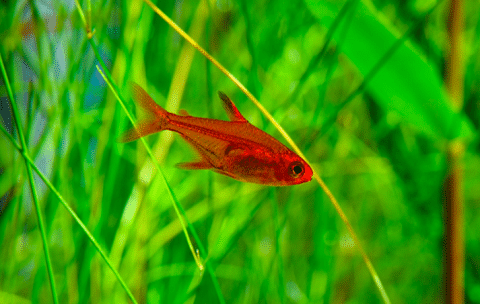
To avoid this, you could add 6 tetras to start and keep an eye on your nitrates. Perform a weekly water change to keep your nitrate level to below 20ppm and give your bacteria a chance to develop further. Introduce more fish in stages to allow the nitrifying bacteria colonies to grow. Growing live plants is also hugely helpful, because they take nitrates out of the tank water, and turn them into healthy new leaves.
In some planted aquascapes, fish all added in 2 large stages. However, note that these setups are loaded with lots of plants and lots of filtration. This is an advanced techique that requires research if you want to do this.
Depending on the type of fish you are looking for, I have many guides. You can check them out below:
FAQS
How long does it take to cycle a fishless cycle?
Depending on the method you use, a fishless cycle will usually take anything from a few days to about 6 weeks before ammonia and nitrite levels drop off. If you’re starting from scratch with something like the fish flakes method, and with all new equipment and sterile gravel, the process can take over a month. If you seed your filter with mature media, the cycle can be instantly ready.
Should I do a water change first?
Since cycling is about allowing changes in water chemistry to happen, it would make sense to not interfere while this is happening. If however, your ammonia levels spike too high during your fishless cycle, it’s a good idea to perform a partial water change.
This is because high ammonia levels can actually slow or stop the cycle. Only a partial water change is necessary though because you do need to have ammonia present for the cycle to happen.
Is this necessary?
Fishless cycling is absolutely necessary for the health and well-being of your future pets. Although it does take some patience, safely cycling your tank is the key to success when keeping fish and other live animals.
Remember, starting up an aquarium is a long-term project, so try not to rush this important first stage. You could use the time while you’re cycling your tank to track down the fish you want and do all the research about their needs and care.
What are the advantages of this?
The major advantage of fishless cycling is that it does not stress or kill any fish unnecessarily. Apart from the obvious ethical side to this, it also prevents you from losing money by replacing livestock. Using fish to cycle your tank often leaves you with the problem of what to do with that unwanted fish once the tank is cycled.
Do I need to add ammonia?
Yes, the nitrogen cycle does need some form of ammonia to get started and grow your bacteria levels. Avoid using general-purpose household ammonia for this because it often has added chemicals that can affect the process.
It is best to use a purpose-made product like Dr. Tim’s Ammonium Chloride to add ammonia in its pure form or use something like fish food or a dead shrimp to add this compound to the aquarium water.
Final Thoughts
After reading this article, I hope you have a better understanding of why cycling is so important and how to do it safely without the help of hardy fish. I know it can be tough to stay patient when setting up a new tank, but once you understand why we cycle, and the obvious benefits of having a healthy fishless cycled aquarium, the waiting gets a lot easier!
- About the Author
- Latest Posts
I’m thrilled that you found Aquarium Store Depot! Here you’ll find information on fish, aquariums, and all things aquatics related. I’m a hobbyist (being doing this since I was 11) and here to help other hobbyists thrive with their aquariums! I adhere to a high quality Editorial Process and Review products with real life field usage and practical analysis.

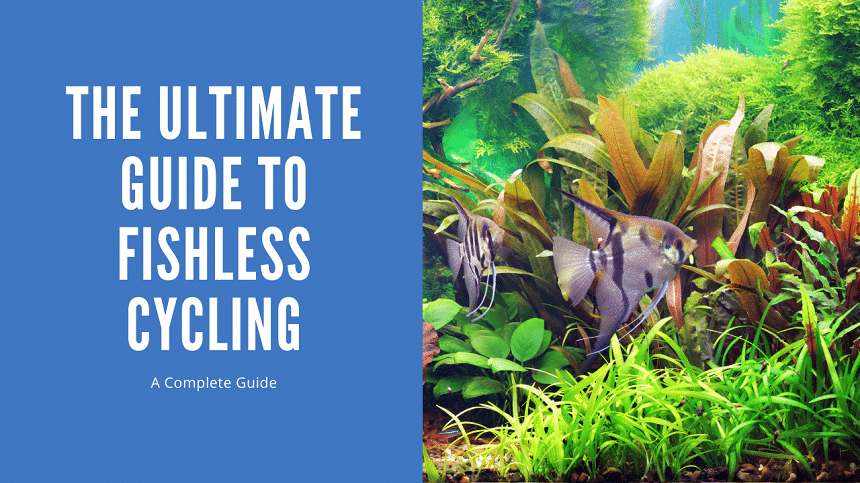
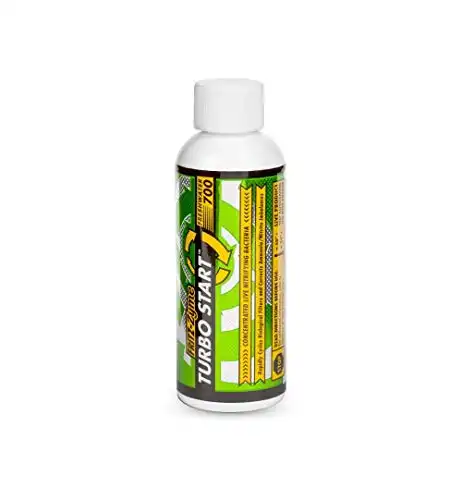

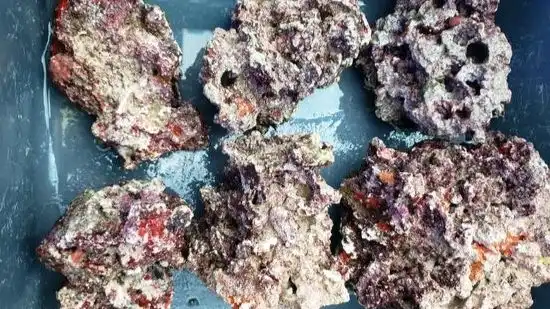
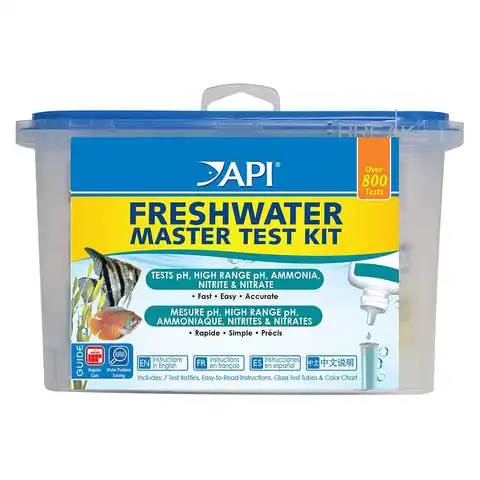




This helped me understand things way more! I appreciate your article so much.